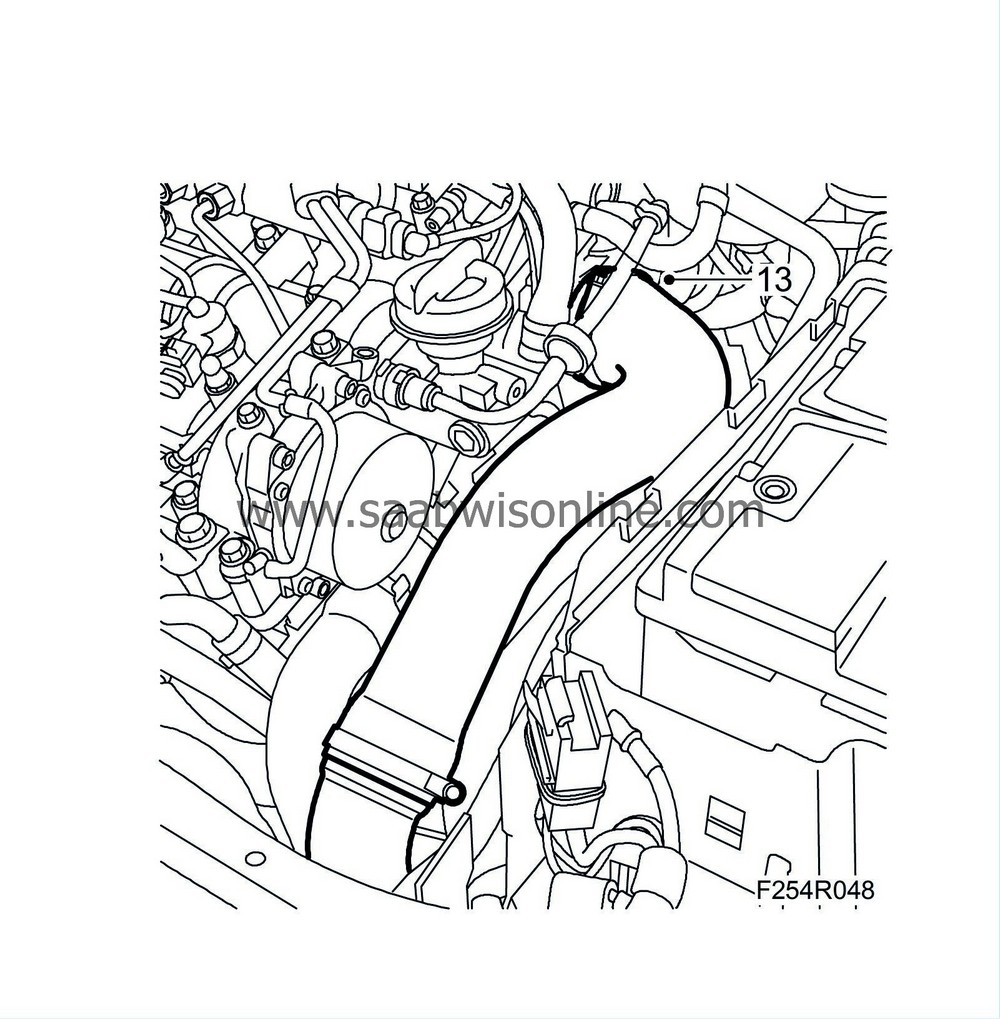Front catalytic converter
| Front catalytic converter |
| To remove |
|
|||||||||||||
| 1. |
Take the cap off the expansion tank to release any pressure.
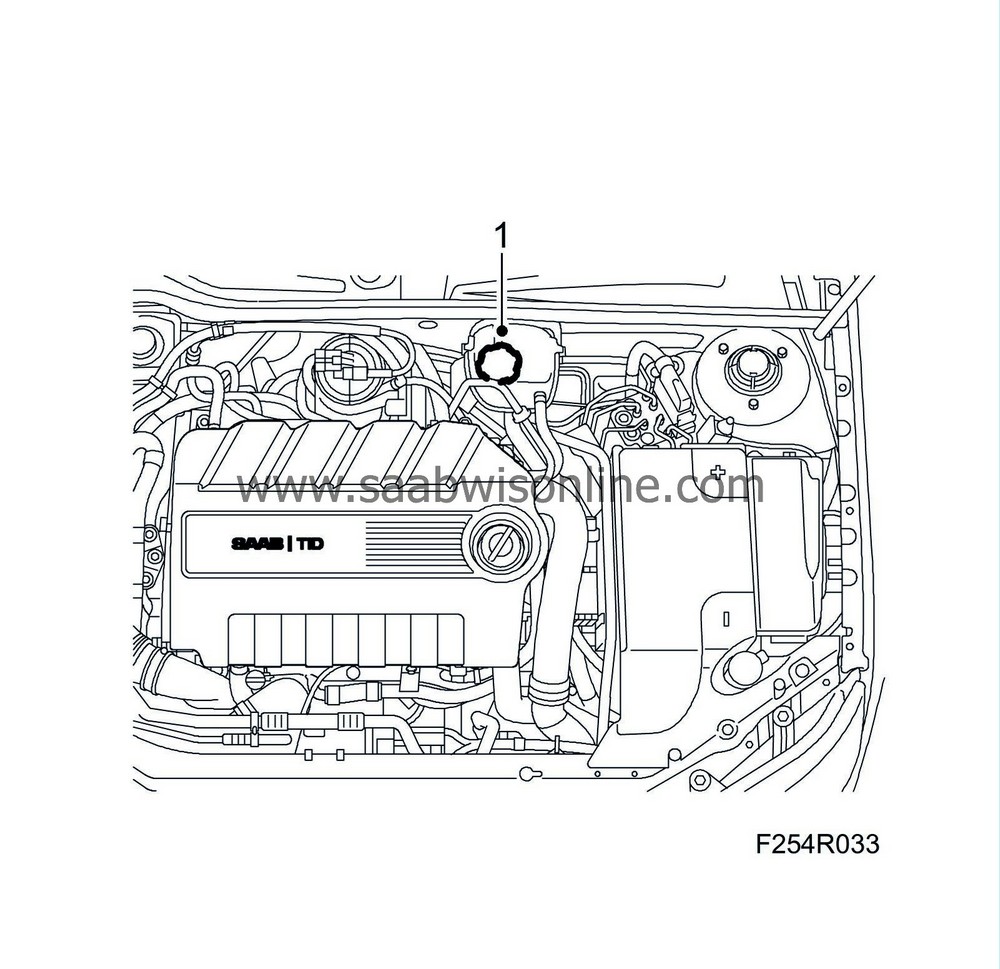
|
|
| 2. |
Raise the car.
|
|
| 3. |
Remove the lower engine cover.
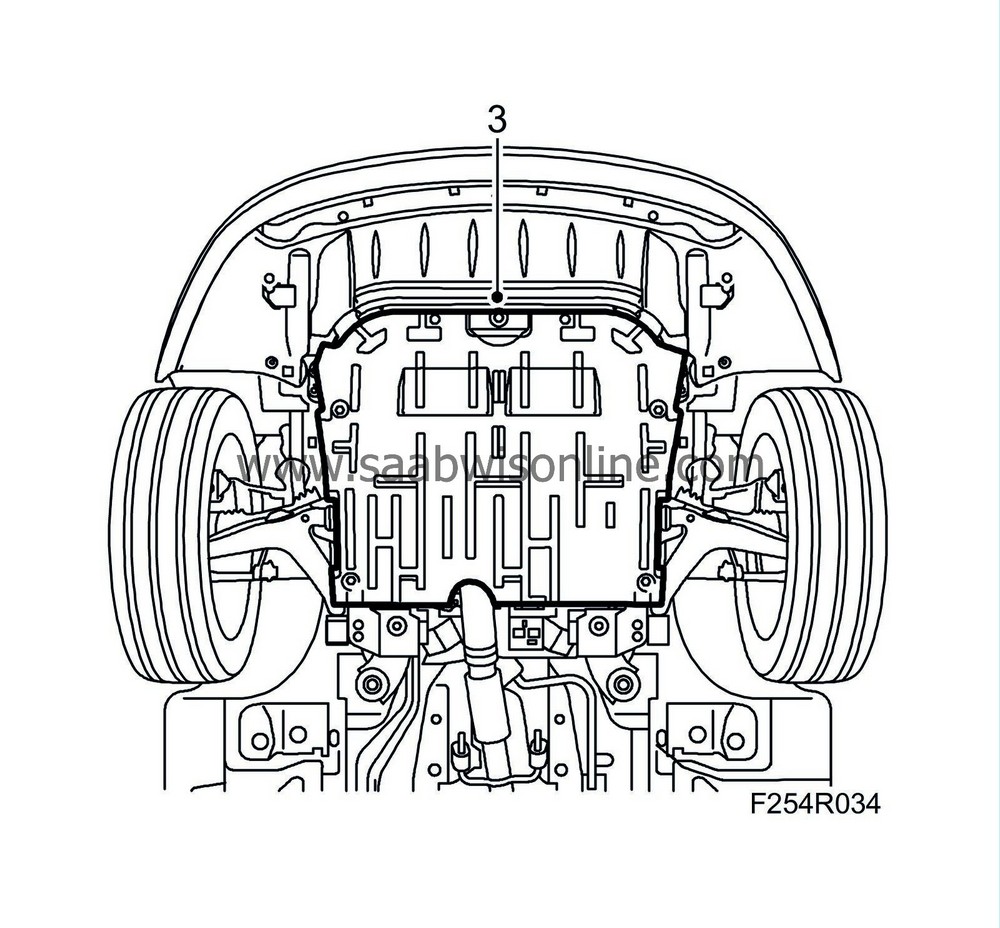
|
|
| 4. |
Undo the right-hand side of the front spoiler shield and fold it down.
|
|
| 5. |
Place a suitable receptacle under the radiator. Connect a hose to the radiator and drain the coolant. Close the cock and refit the spoiler shield.
|
|
| 6. |
Undo and remove the front exhaust pipe.
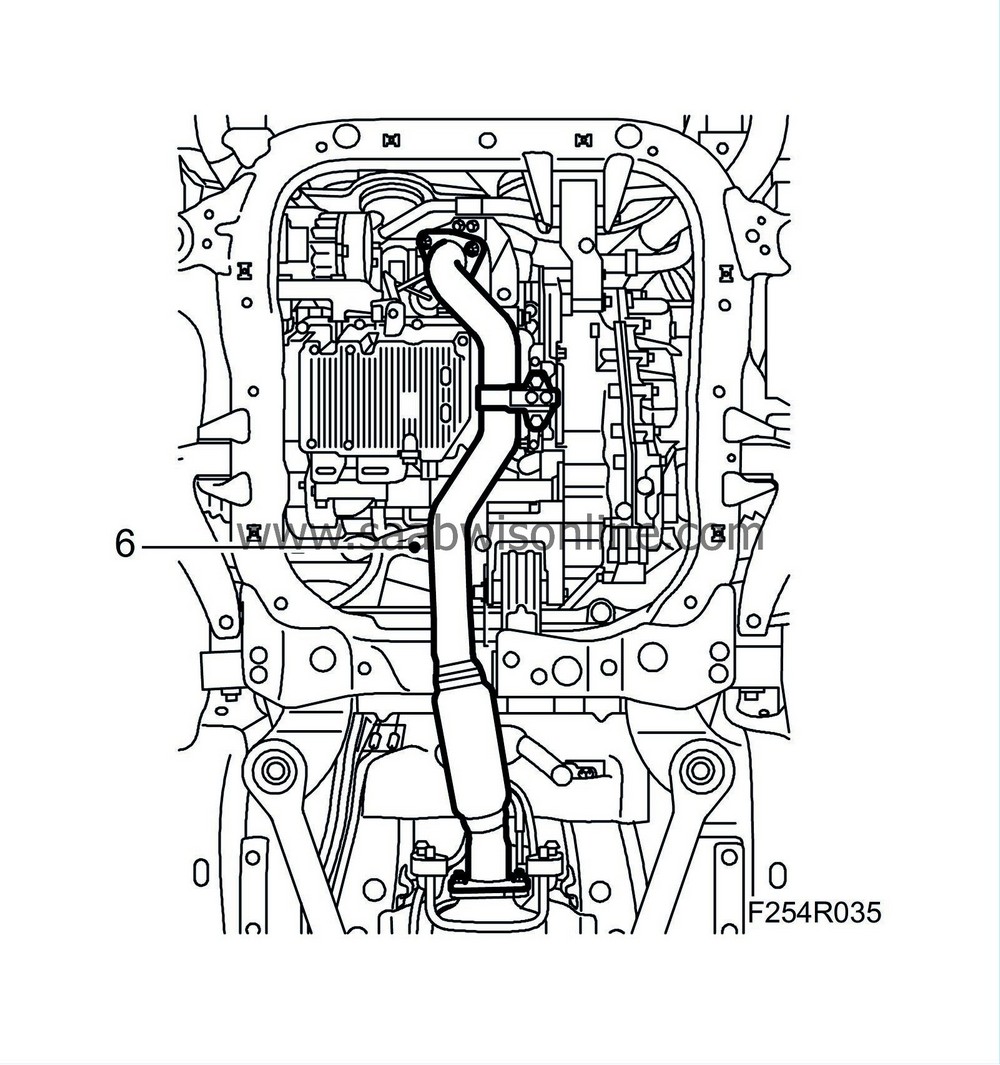
|
|
| 7. |
Remove the heat shield lower nuts and bolts.
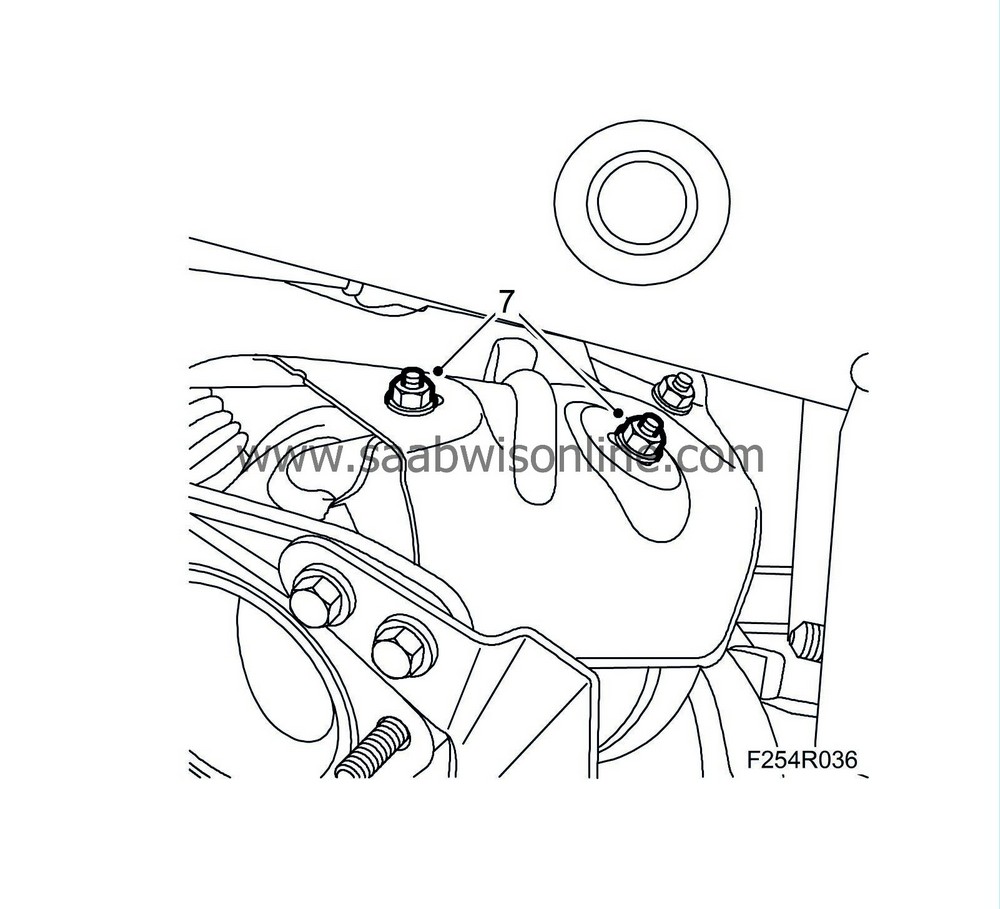
|
|
| 8. |
Lower the car.
|
|
| 9. |
Remove the upper engine cover.
|
|
| 10. |
Remove the screw holding the dipstick tube.
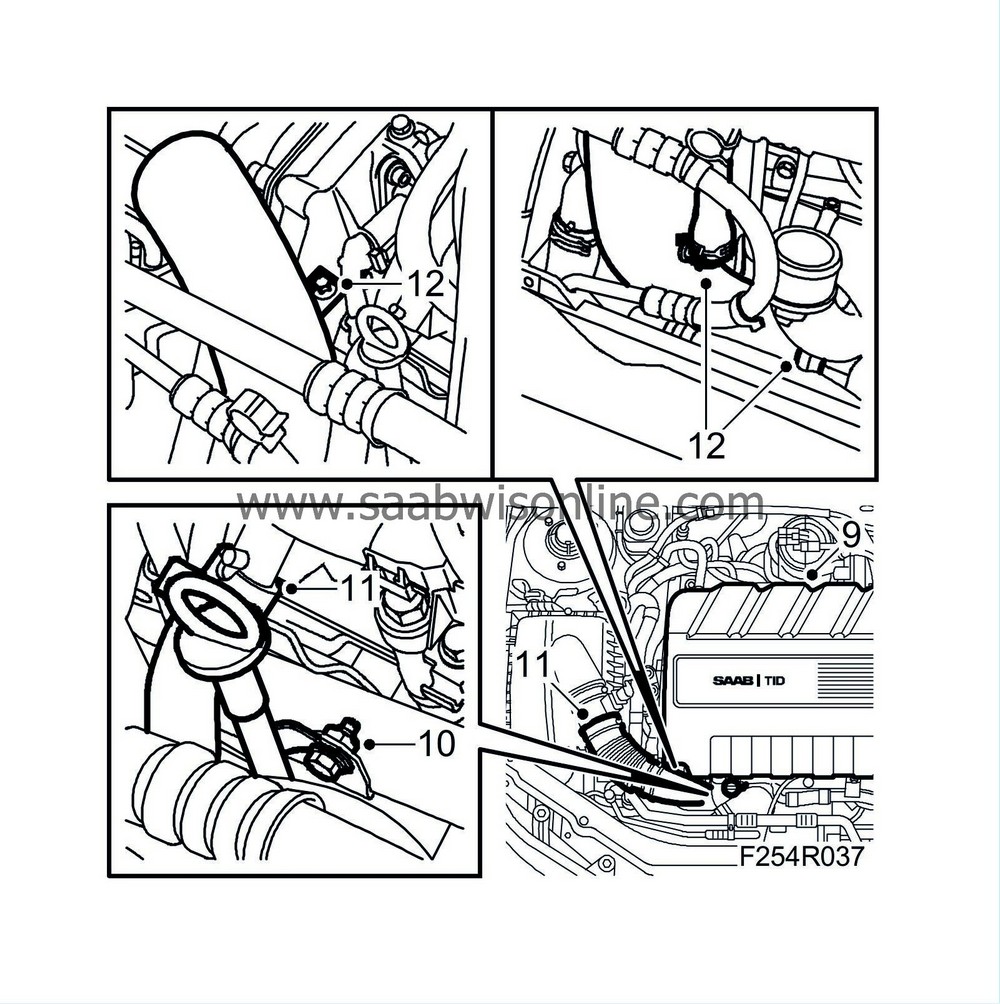
|
|
| 11. |
Remove the turbo intake hose and detach the crankcase ventilation hose.
|
|
| 12. |
Remove the turbocharger inlet pipe and plug the turbo.
|
|
| 13. |
Remove the turbo delivery pipe and hoses. Plug the pipe and hoses.
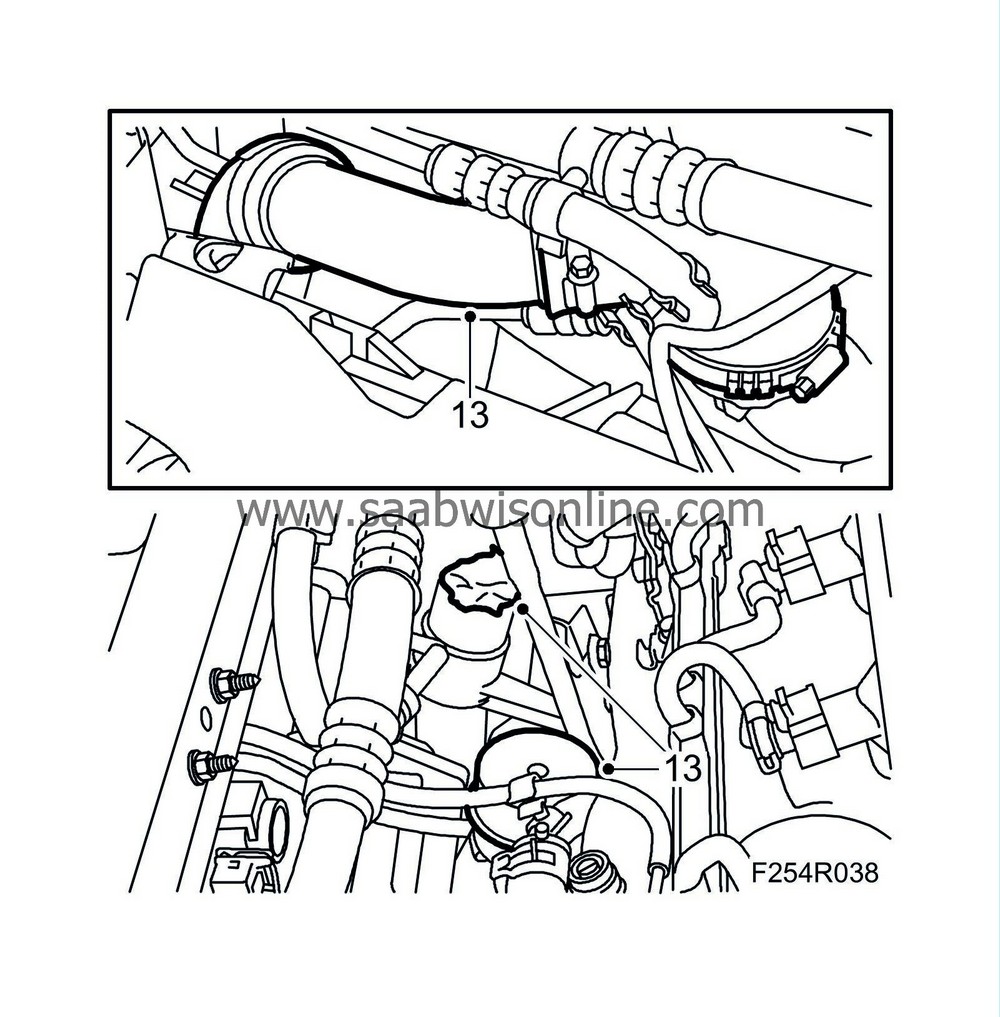
|
|
| 14. |
Remove the delivery hose from the throttle body and delivery pipe.
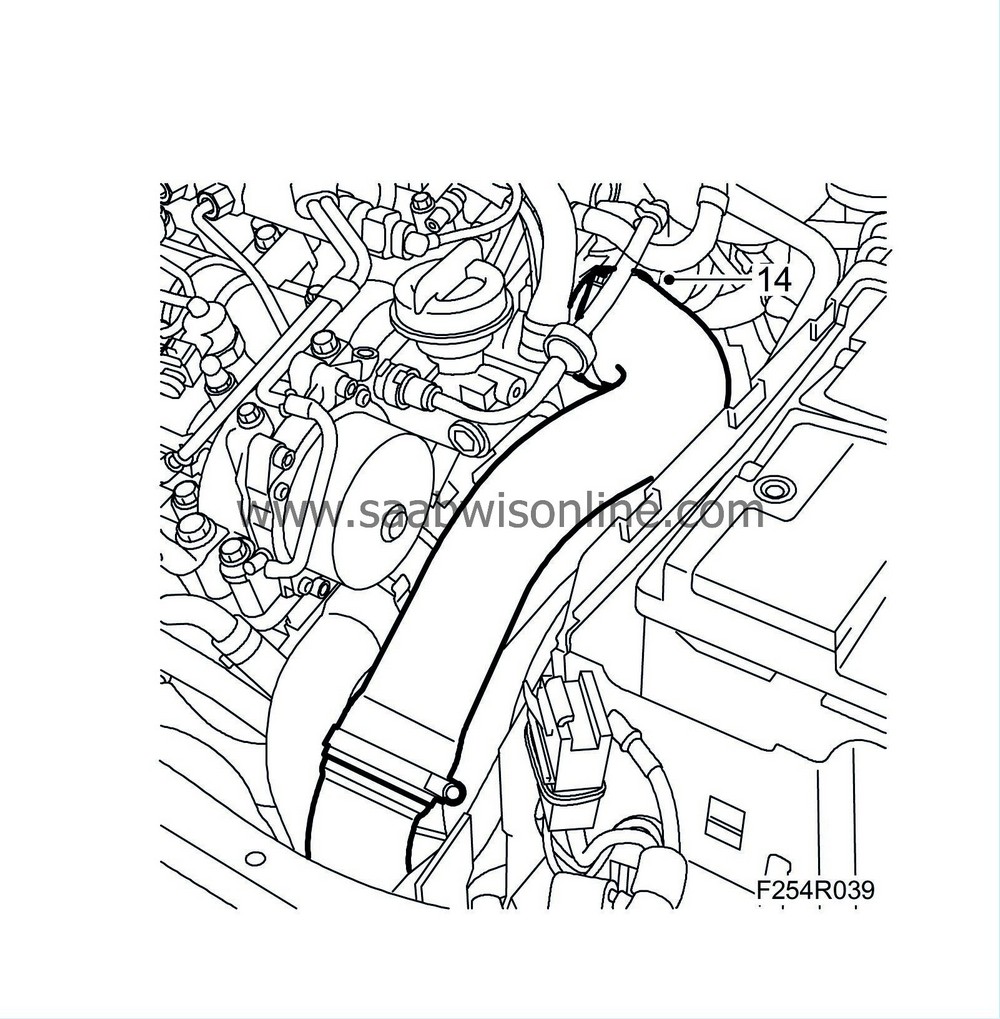
|
|
| 15. |
Remove the upper coolant hose from the thermostat housing and bend it aside.
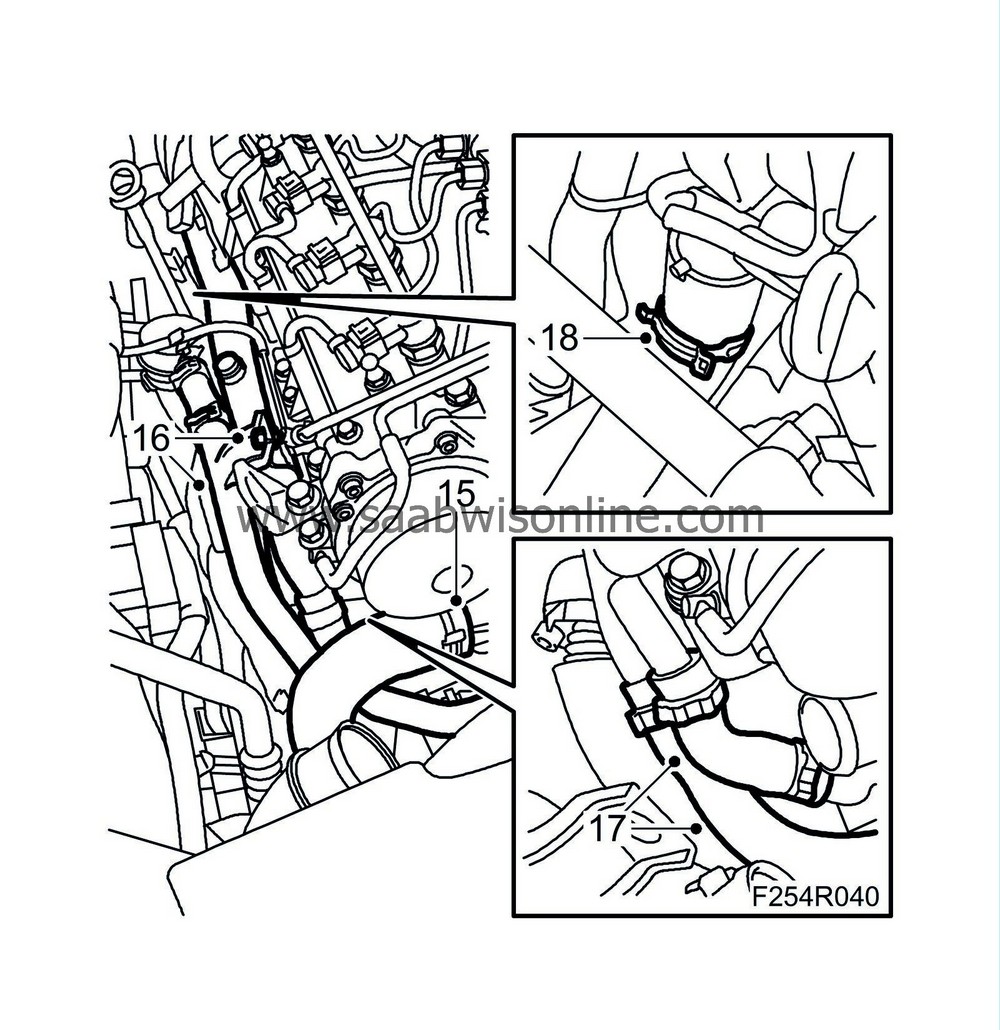
|
|
| 16. |
Remove the radiator pipe to the reservoir from the engine, two mountings, and the hose from the manifold.
|
|
| 17. |
Remove the coolant hoses form the coolant pipe on the left-hand side of the engine.
|
|
| 18. |
Remove the lower coolant hose from the coolant pipe.
|
|
| 19. |
Undo the front bolts on the upper timing cover. Bend out the cover slightly and insert a wedge.
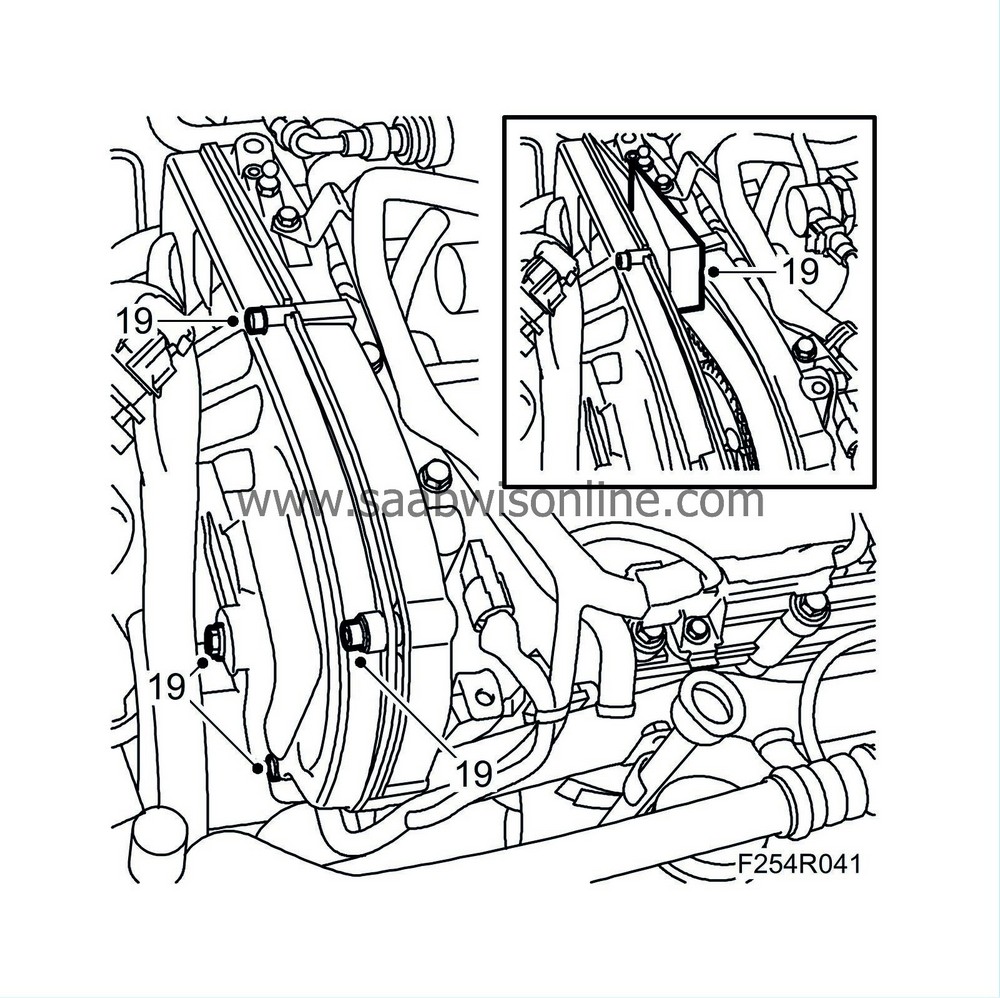
|
|
| 20. |
Remove the coolant pipe.
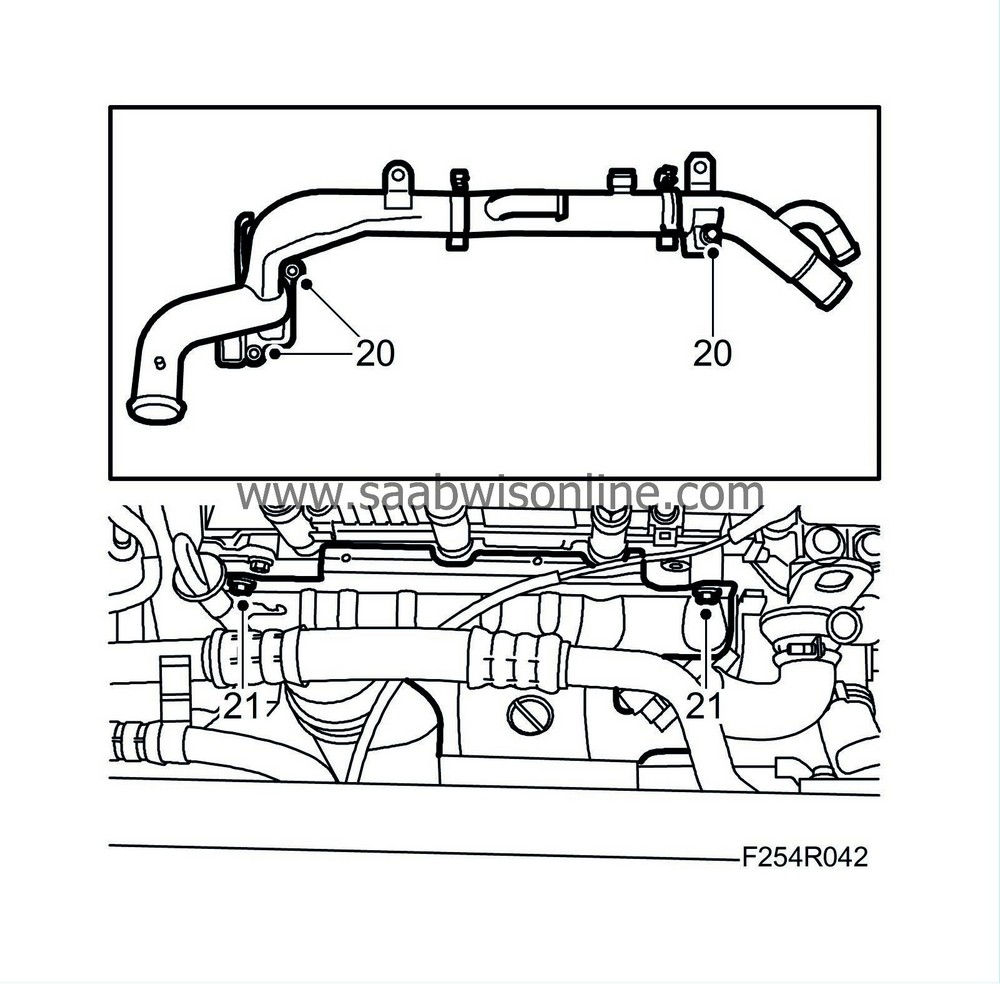
|
|
| 21. |
Undo the radiator connector and remove the heat shield.
|
|
| 22. |
Raise the car.
|
|
| 23. |
Remove the temperature sensor from the catalytic converter.
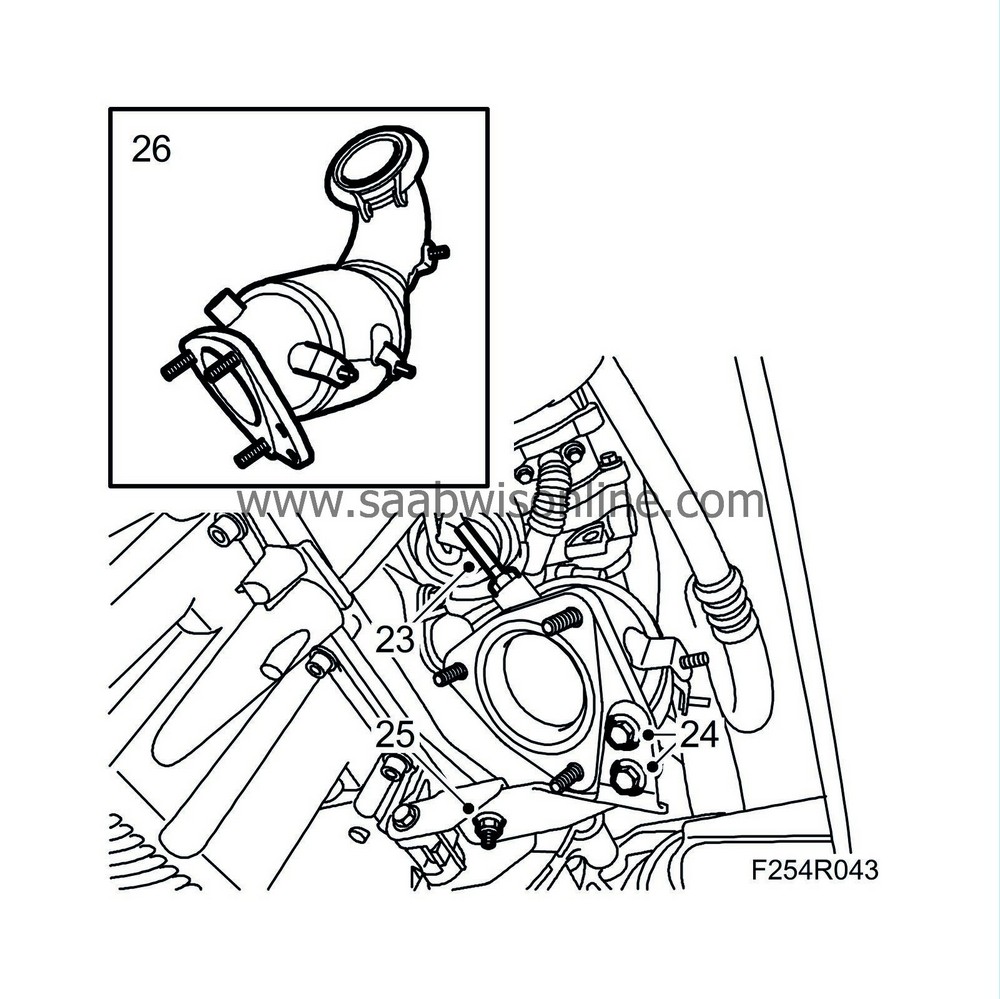
|
|
| 24. |
Remove the lower retaining bolts from the catalytic converter. Undo and bend down the mounting.
|
|
| 25. |
Loosent the nut on the clamp. Hold the clamp open with circlip pliers, for example, and lift down the catalytic converter.
|
|
| To fit |
| 1. |
Clean the sealing surfaces.
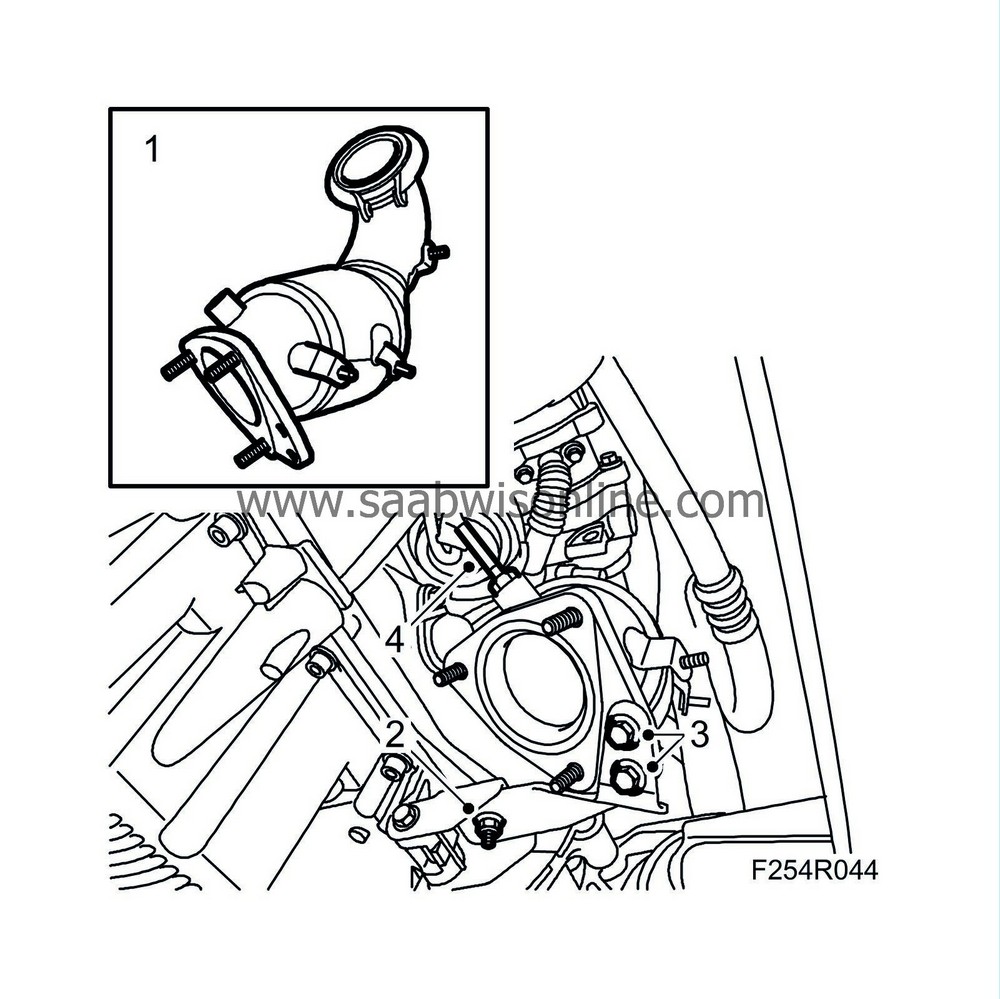
|
|
| 2. |
Lift up the catalytic converter and fit it with a new gasket. Hold open the clamp with circlip pliers and turn it until the nut points down. Tighten the clamp.
Tightening torque 20 Nm (15 Nm) |
|
| 3. |
Bend back the mounting. Fit the lower retaining bolts for the catalytic converter.
|
|
| 4. |
Fit the temperature sensor to the catalytic converter.
|
|
| 5. |
Lower the car.
|
|
| 6. |
Fit the heat shield and the radiator fan connector.
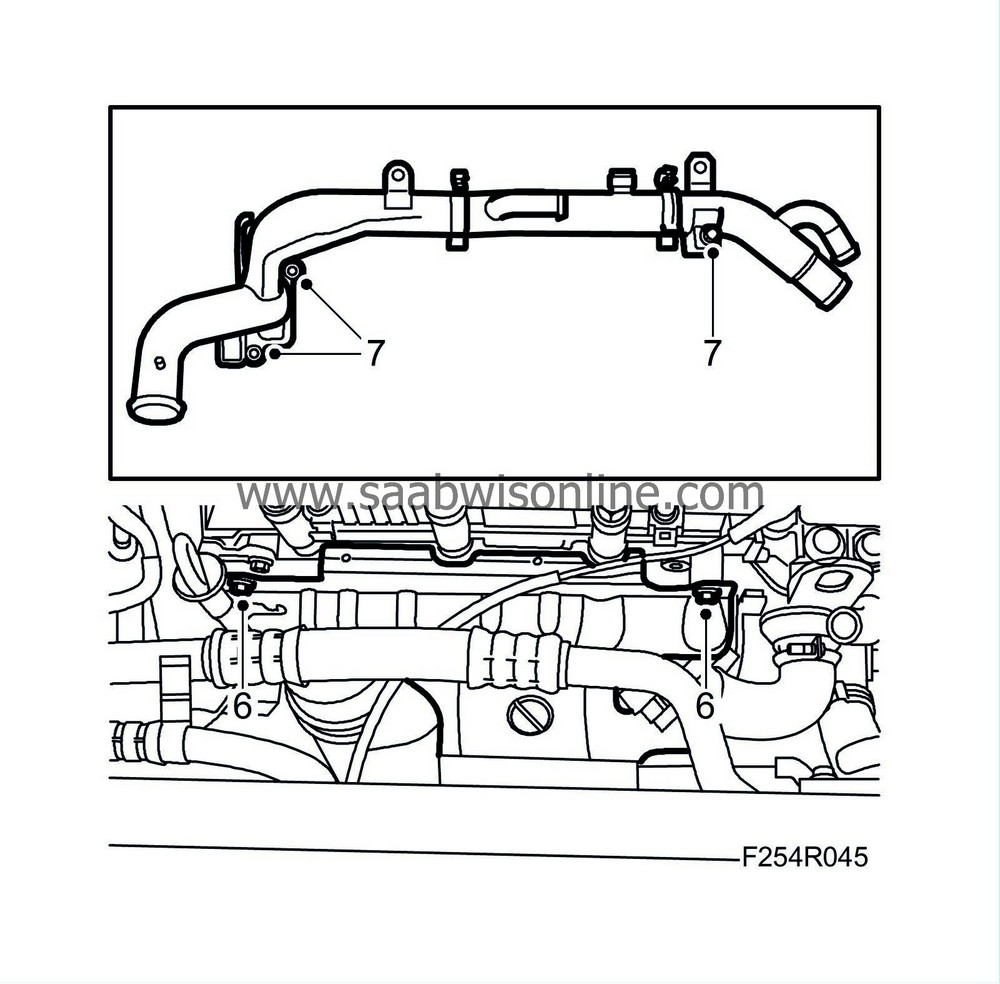
|
|
| 7. |
Fit the coolant pipe with a new gasket.
|
|
| 8. |
Remove the wedge. Bend back the cover and fit the front bolts on the timing cover.
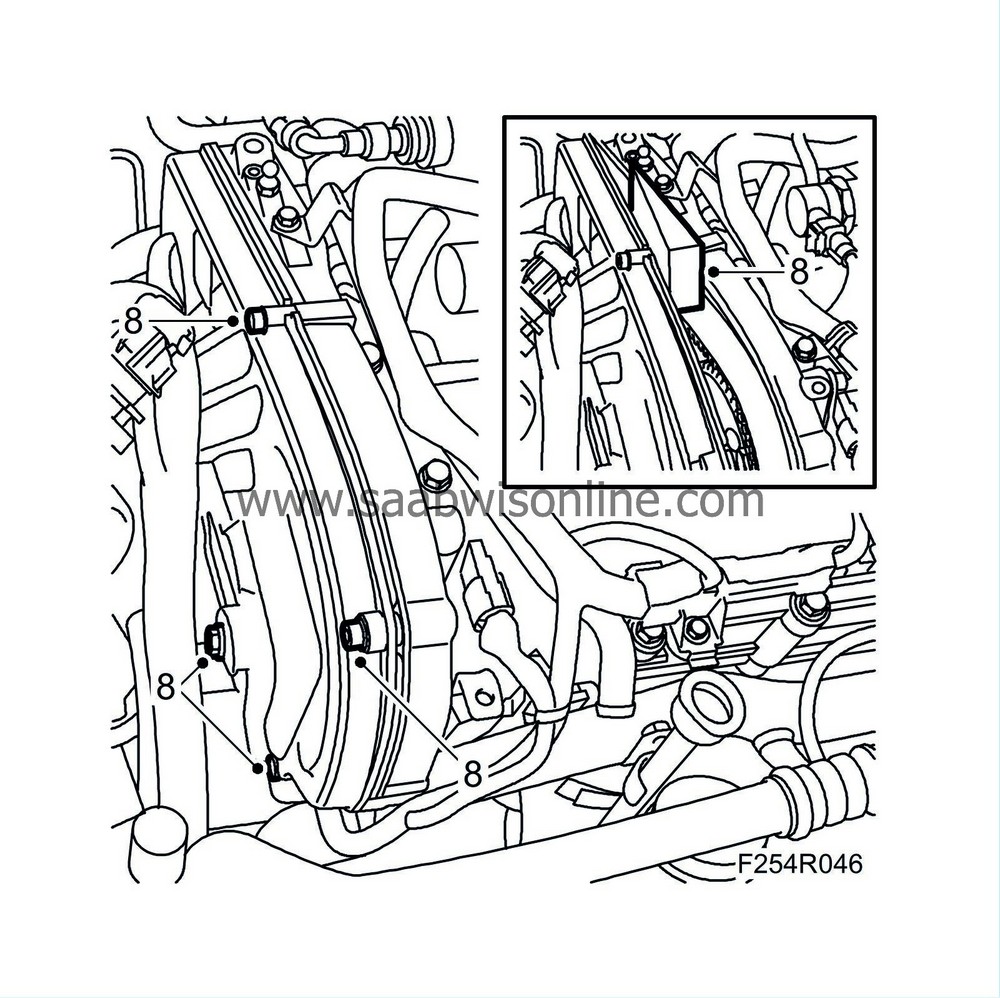
|
|
| 9. |
Fit the lower coolant hose on the coolant pipe.
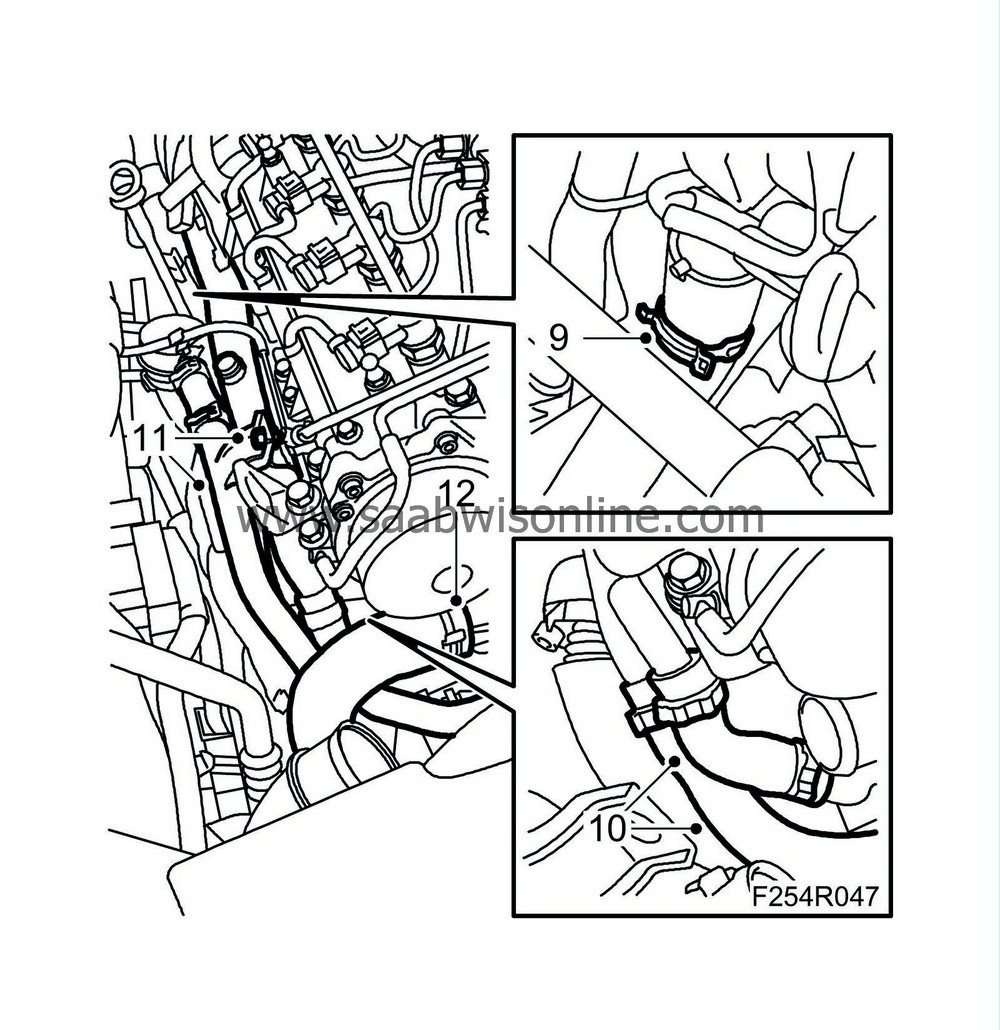
|
|
| 10. |
Fit the coolant hoses to the coolant pipe on the left-hand side of the engine.
|
|
| 11. |
Fit the coolant pipe to the reservoir on the engine, two mountings and the hose from the manifold.
|
|
| 12. |
Fit the upper coolant hose to the thermostat housing.
|
|
| 14. |
Remove the plugs and fit the turbocharger delivery pipe and hoses.
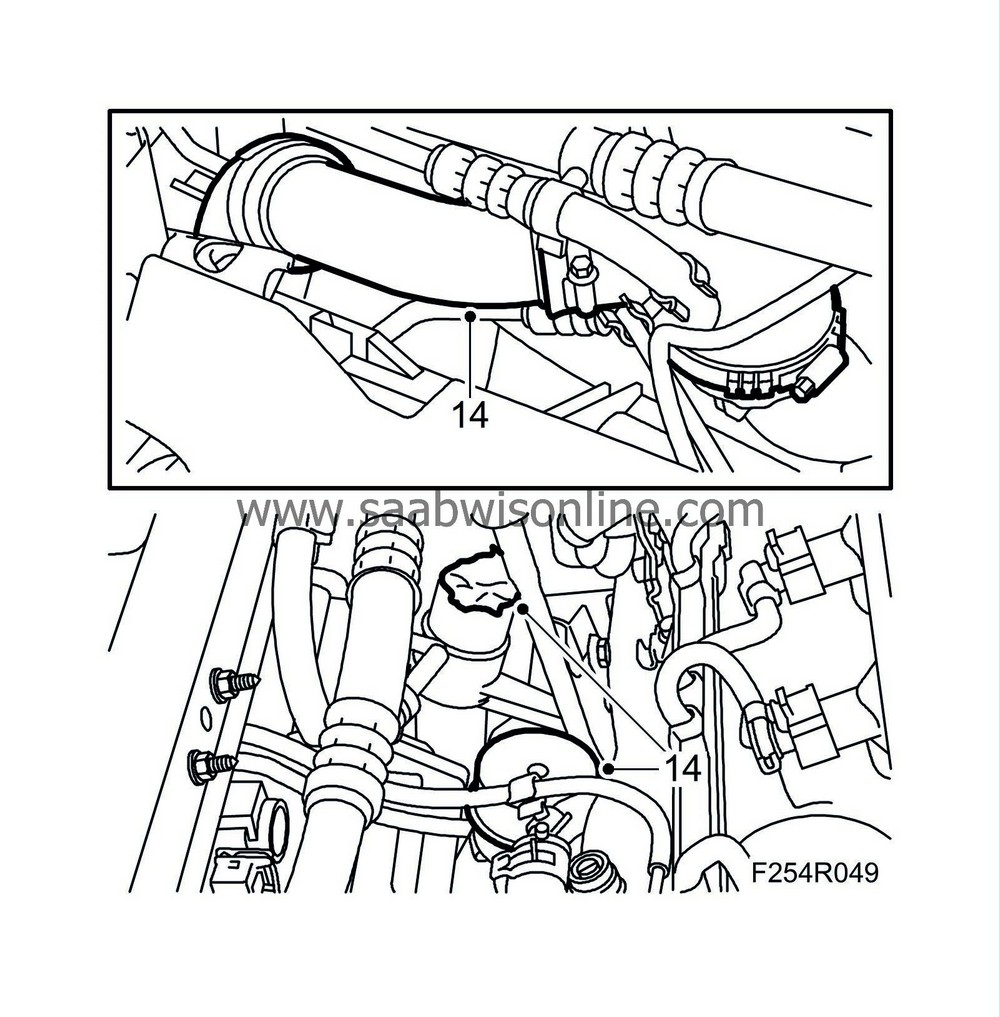
|
|
| 15. |
Remove the plug and fit the turbocharger intake pipe.
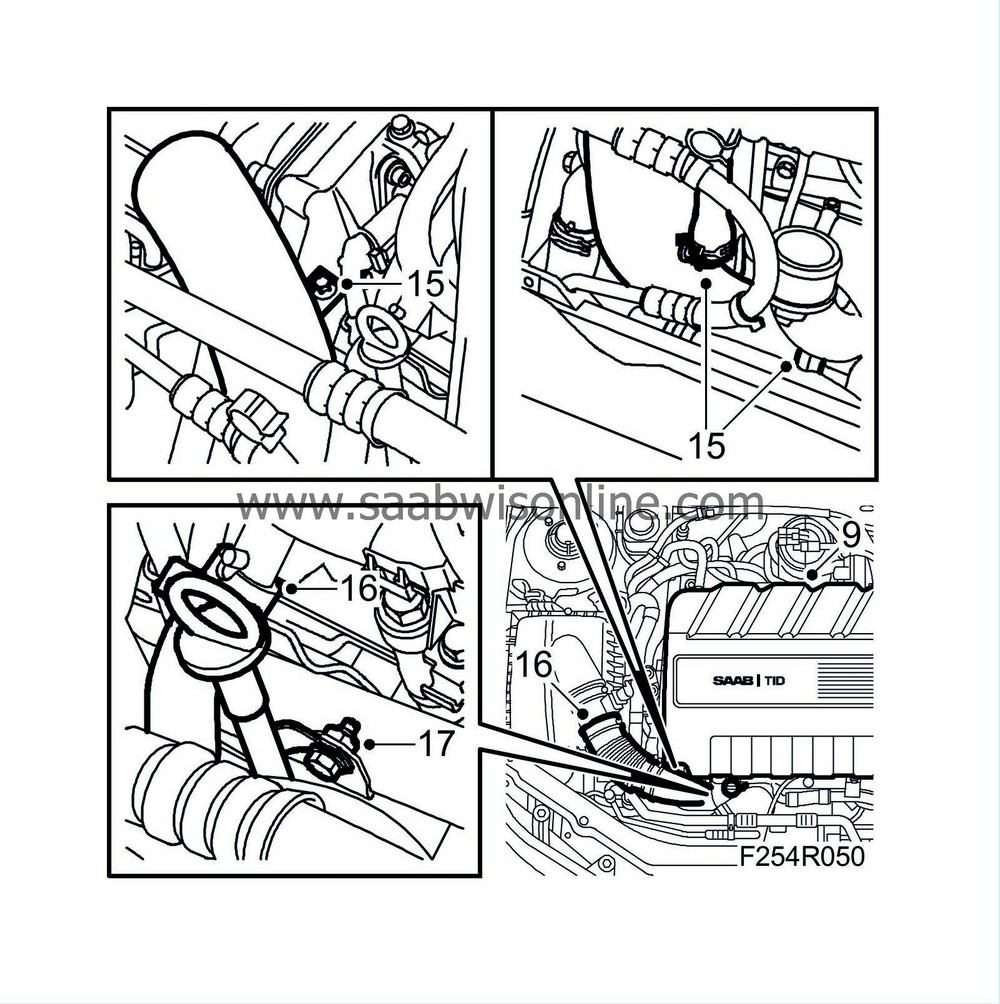
|
|
| 16. |
Fit the crankcase ventilation hose and the turbocharger intake hose.
|
|
| 17. |
Fit the screw holding the dipstick tube.
|
|
| 18. |
Fit the upper engine cover.
|
|
| 19. |
Raise the car.
|
|
| 20. |
Fit the heat shield lower nut and bolt.
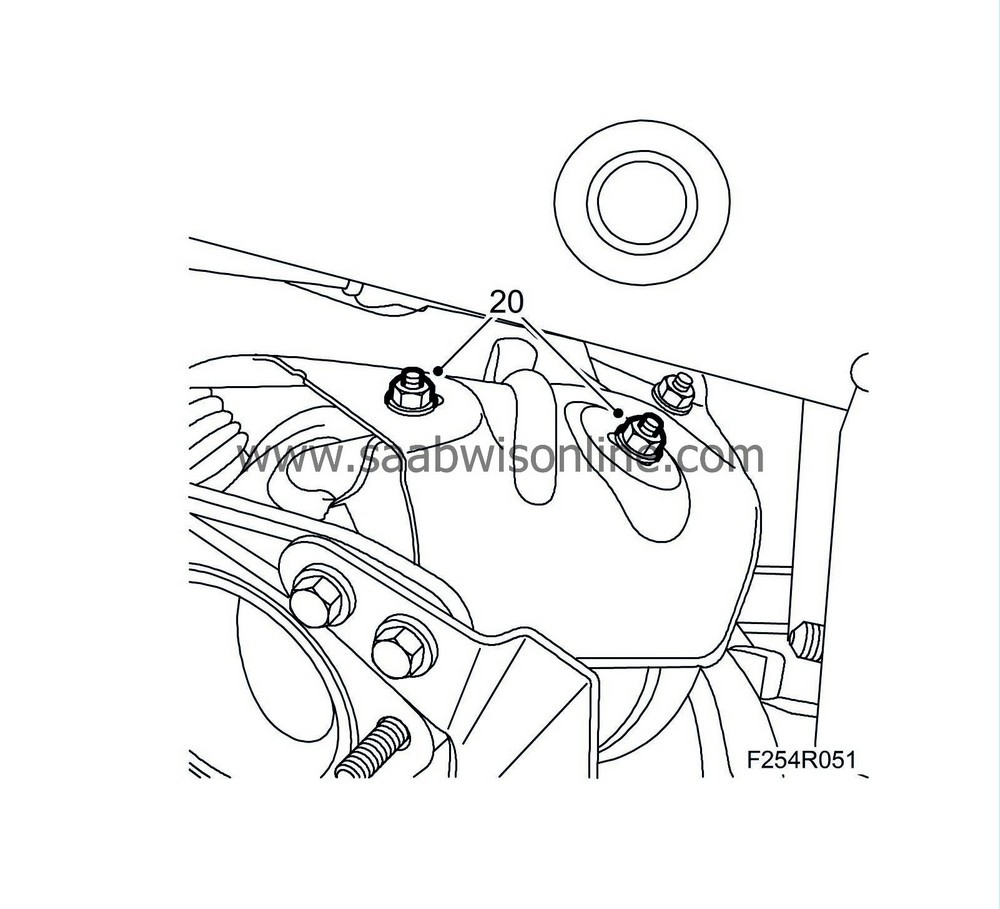
|
|
| 21. |
Fit the front exhaust pipe with new gaskets.
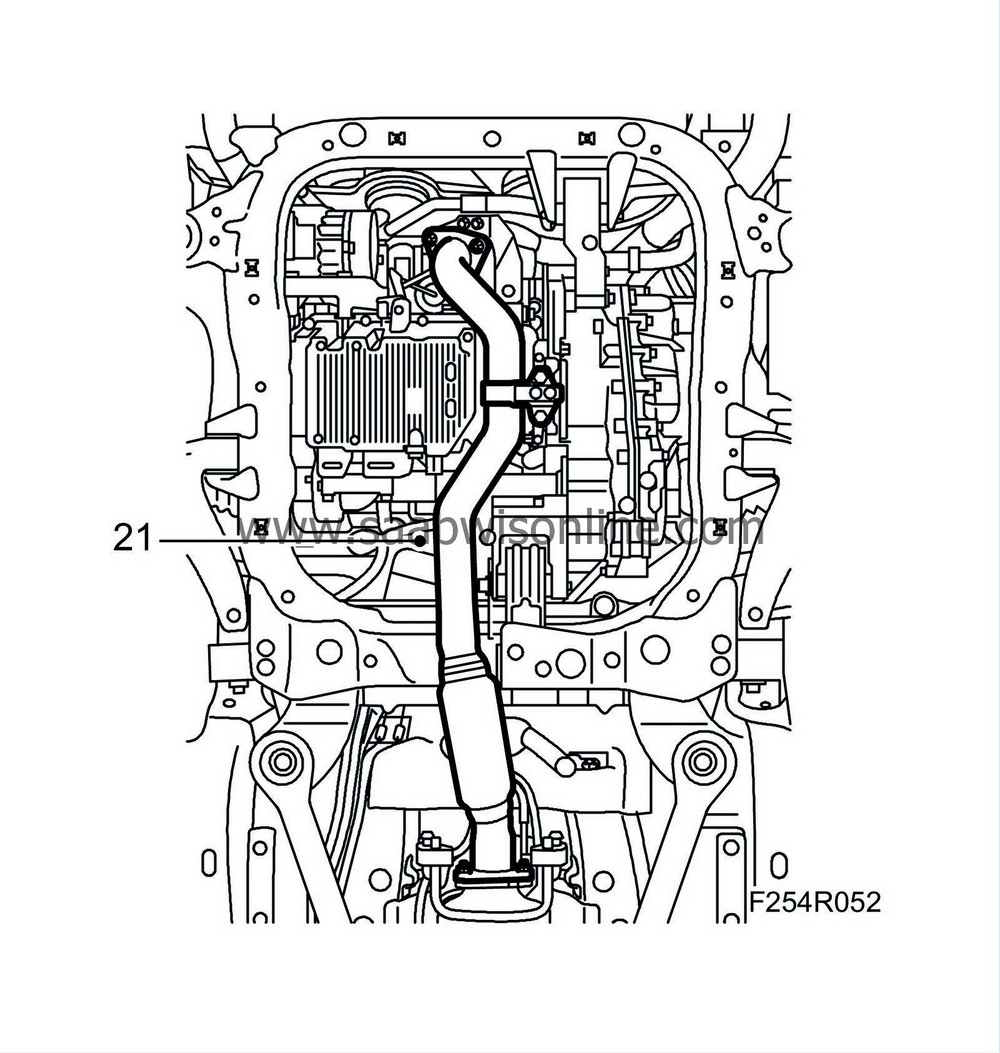
|
|
| 22. |
Fit the lower engine cover.
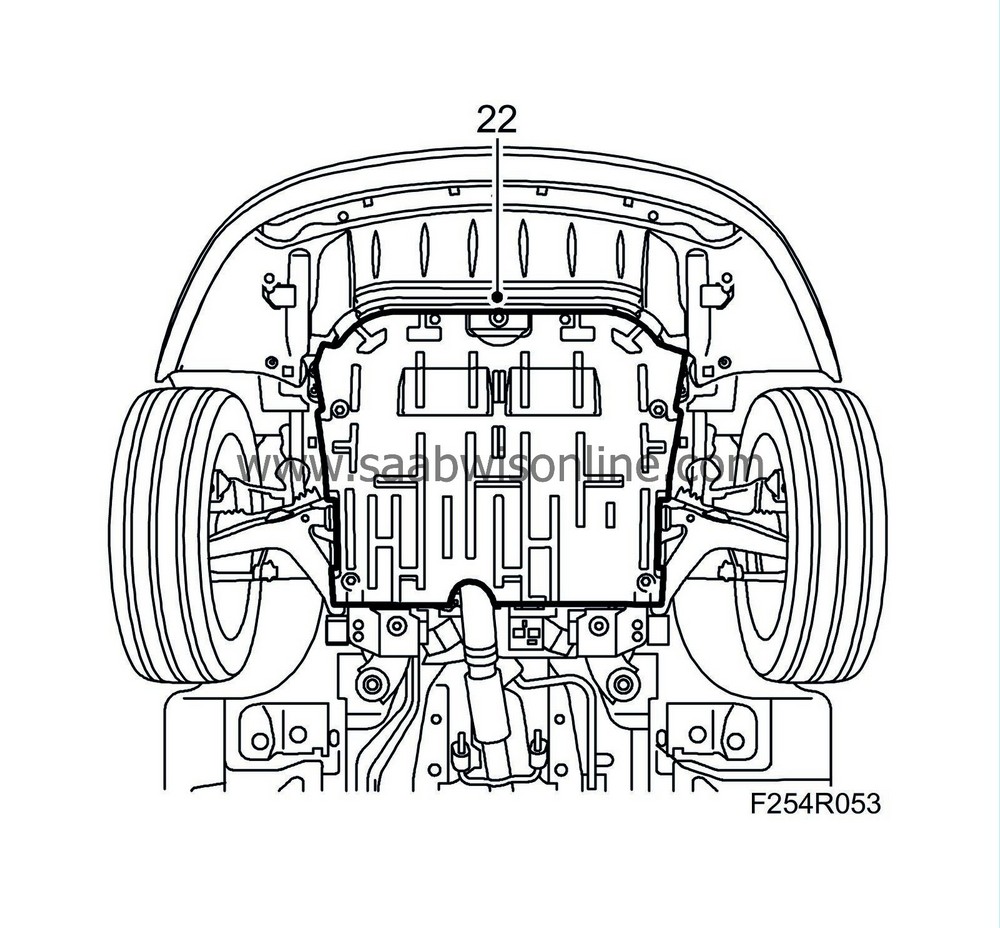
|
|
| 23. |
Lower the car.
|
|
| 24. |
Carry out
Filling and bleeding the cooling system
|
|
| 25. |
If a new catalytic converter is fitted
: Connect the diagnostic tool to reset adaptation values. Select Menu - Engine - Engine management system - Adjustment -
Pre Catalyst Replaced.
|
|
| 26. |
Connect an exhaust hose and start the engine. Check the exhaust system for leaks.
|
|

 Warning
Warning
